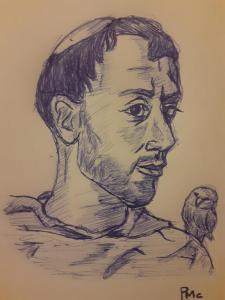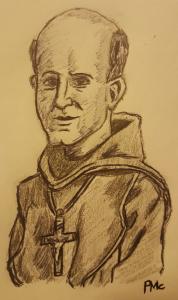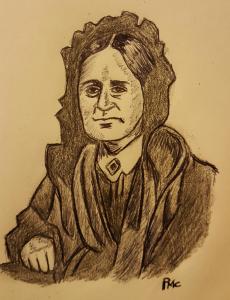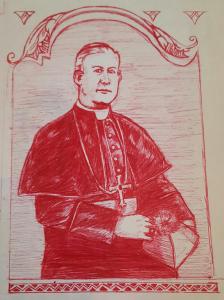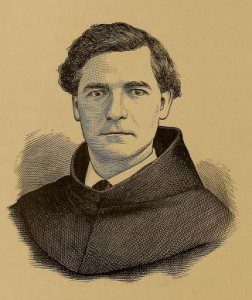
St. Anthony of Padua, New York, New York (1866)
THERE can be little doubt but that the Catholic navigator Gomez, at the close of the first quarter of the sixteenth century, entered our harbor on the feast of the great Franciscan, St. Anthony of Padua; and, himself a Portuguese, felt especial devotion to that glory of his native land. We draw this conclusion from the fact that other coast names are those of summer feasts, and in the name of St. Anthony applied to our noble Hudson, we see the first dedication to that great saint.
No church, however, bore his name until the year 1859, when a zealous Italian priest was touched by the condition of his poor countrymen in New York. Many of these, having none to address them in their native tongue, had fallen into utter neglect of their religious duties, while the revolutionary element, full of hatred of religion and the priesthood, did all in their power to weaken the pious impressions of early training; and the devouring wolves of religious proselytism, who cared little for the temporal or eternal future of their victims, so that they lured them from Rome, strained every nerve and lavished money to seduce the poor Italians from their faith.
Rev. Mr. Sanguinetti obtained a lease of the church building in Canal Street which had been used by the congregation of St. Vincent de Paul, and with the sanction and encouragement of the Most Reverend Archbishop, began to collect his scattered countrymen and endeavored to revive piety and devotion among them. His labors were for from fruitless ; but difficulties arose, and the spirit of evil was not so easily driven from a field that he claimed. The good priest, after struggling for more than a year, lost heart, and, thoroughly discouraged, abandoned the mission which he had undertaken. But the Church of St. Anthony of Padua was not to be merelv a name.
The wants of the Italians had become evident, and many among them were not disposed to let the project fail. The Most Reverend Archbishop mentioned his difficulty to the Very Rev. Pamfilio da Magliano, then Provincial of the Franciscans at Allegheny. Nothing could be more consoling to that excellent religious man, and he gladly undertook to establish a church for his countrymen. The Rev. Leo Pacilio, an accomplished Neapolitan priest, was sent to commence the good work. Selecting a portion of the city where no Catholic church existed, he looked for a suitable building. Prudence suggested economy, and finding in Sullivan Street a Methodist church on leasehold property that could be acquired on reasonable terms, he secured it, and soon fitted it up for the use of the Italian congregation whom he gathered.
The church was solemnly dedicated on the 10th day of April, 1866, by the Most Reverend Archbishop, now Cardinal McCloskey, assisted by the Very Rev. William Starrs, V.G.; and the Rev. Francis McNeirny, secretary. After the usual ceremonies setting apart this building for the service of the Church, the altar was adorned, and a Solemn High Mass celebrated by the Very Rev. Pamfilo da Magliano, Father Leo da Saracena as deacon, and Father Andrew Pfeiffer as subdeacon. The Most Reverend Archbishop preached the dedicatory sermon; and after the Post Communion, the pastor. Rev. Leo Pacilio, returned thanks to the Archbishop in Italian, expressing the gratitude of his flock. In the evening, at vespers, the Rt. Rev. Bishop Lynch of Charleston gave benediction, and an Italian sermon was delivered by the learned Dr. De Concilio of Jersey City. The Fathers at first took up their abode in part of the building, which they found arranged so as to be adapted to the purpose, and zealously began their labors.
When the success of St. Anthony’s was no longer in doubt, a more convenient residence was obtained. The Italians soon found their way fi-om all parts to the new church, and benefited by the ministrations of the Franciscans. Father Leo was succeeded by F, Joachim Guerrini. The convent was then for some years the residence of the Provincial of the Order in this country. The Very Rev. James Titta, who was attached to the church from 1871, remained when made Provincial, and after the conclusion of his term. He was a native of Gombitelli, and after his ordination in 1854 belonged to the choir of the Lateran Basilica. He died Guardian of the Convent and pastor of St. Anthony’s, March 11, 1877, highly esteemed by the flock which he had directed, now embracing not only Italians but many English-speaking Catholics, who have learned to appreciate the sons of St. Francis of Assisi. The present Guardian of the Convent and pastor of Rev. of the church is the Rev. Father Anacletus, O.S.F.
Such is, in brief, the history of the church dedicated to the great Franciscan saint, in whose honor Father Louis Hennepin, two centuries ago, named the cataract on the Upper Mississippi, still known as the Falls of St. Anthony ; and in whose honor the Spanish Franciscans soon after named a mission in Texas, which has now become an episcopal see. The Fathers at our New York church neglect no means to diffuse piety among- their flock. The Society of St. Vincent de Paid, so zealous in relieving the poor, is well established ; and there is also the Italian Benevolent Society of St. Anthony. They have organized rosary and temperance societies for both English and Italian-speaking Catholics, with the Children of Mary, and a Sodality of the Holy Angels, and a Society of the Sacred Heart. The Franciscans have a Third Order, for persons of both sexes living in the world, but following to some extent the rule of St. Francis. There are Tertiaries connected with this church, and also the Confraternity of the Cord of St. Francis. Education has received special care. The late Father James Titta bought a suitable building and established a parish school, in which English and Italian are taught; the boys by lay teachers, the girls by the Missionary Sisters of the Third Order of St. Francis.
The field open for the labors of the Fathers of the Church of St. Anthony is one that day by day increases. Under the old rule in Italy, living was low; and in no part of the world perhaps was there a more contented population. The dream of Italian unity has been realized, and it has resulted in a profligate and expensive court, a civil administration reckless of expense, a standing army that takes nearly a million of men, in the prime of life, from the pursuits of industry, and compels the rest of the community to support them. The seizure of church property and its sale did little to fill the exchequer, drained by the new outlays. Taxes were multiplied, and many small cultivators were forced to abandon the lands held by their ancestors for centuries.
New Italy drove her children by the thousands from her shores, to seek a livelihood in other lands. The emigration to America took a rapid development, and with the worthy and industrious came, of course, many whose evil courses made them gladly seek a change. The City of New York, the natural centre of immigration, has received Italians by thousands, so that they are now found in all branches of trade and labor, the unskilled taking in many cases the Work on railroads and other improvements, which was formerly almost exclusively performed by the stalwart men from Ireland. These emigrants, in a new and strange country, with none of the influence of their parish priest or religious — their quiet rural homes exchanged for city tenements— were exposed to a loss of faith. It will thus be seen that the Church of St. Anthony of Padua, being the only one in the city devoted exclusively to the care of the spiritual interests of the Italian residents, has an immense work.
John Gilmary Shea, The Catholic Churches of New York City (New York: Lawrence G. Goulding & Co., 1878), 178-182.


